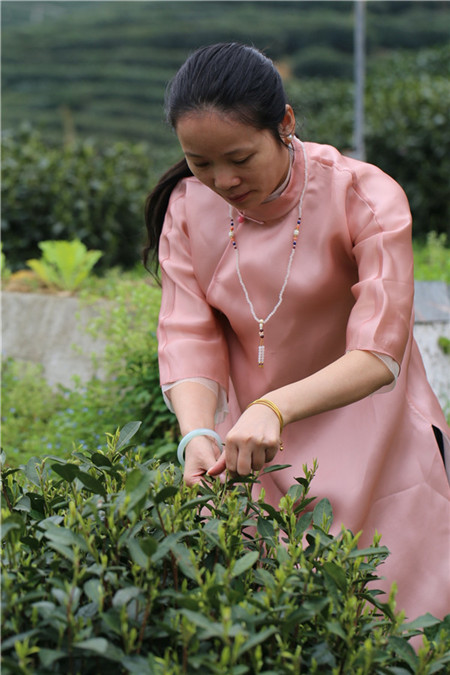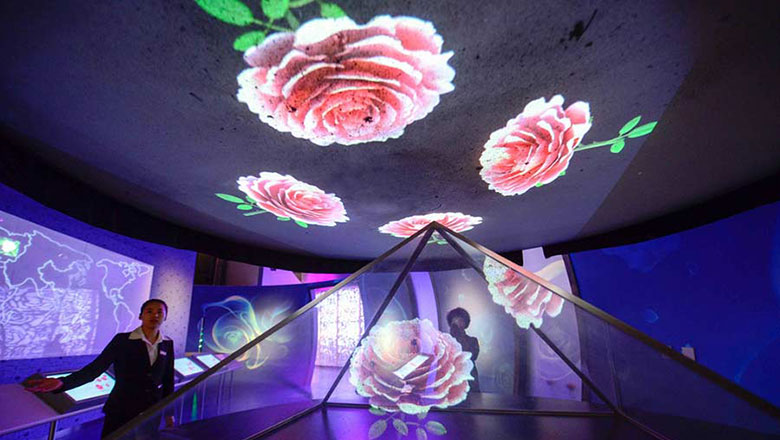The 'gentleman' of Chinese teas
Updated: 2016-05-07 08:35
By Ye Jun(China Daily)
|
||||||||
 |
|
Picking Longjing tea at Meijiawu in Hangzhou. [Photo provided to China Daily] |
Some frequent Chinese tea drinkers like to refer to Longjing (Dragon Well) as the "gentleman" of Chinese teas. The tea produced in middle Zhejiang is known for a green and slightly yellow color, rich orchid and chestnut aroma, as well as a sweet aftertaste and a neat appearance.
The appellation also probably comes because the tea has a long history. On almost every authoritative top 10 famous Chinese teas listings, Longjing rises to the top. In 2008, the roasting production technique of West Lake Longjing tea was listed as a Chinese national-level intangible cultural heritage. A mouthful of the tea is comforting to both the taste buds and body.
A tea with such high status has legends and tales around it worthy of a TV series. Firstly, there really is a "dragon well", a small pool of spring water located at the northwest foot of Wengjia Mountain to the west of West Lake in Hangzhou. According to a local legend, which is, of course, unconfirmed, the pool is believed to have a dragon in it. And the said dragon can access the sea through, presto, a subterranean channel. That's also where the Dragon Well village and the Dragon Well temple are situated.
The history of tea making in the West Lake area dates back to the Tang Dynasty (618-907). That dates the written history of tea in the area to more than 1,500 years. By the Ming Dynasty (1368-1644), Longjing was listed among the top Chinese teas. It reached the top of the list during the Qing Dynasty (1644-1911), especially because of recognition from Emperor Qianlong.
Partly because of the area's early prosperity, Qianlong visited the region six times in his reign of 61 years, and is said to have watched tea making on four visits. He wrote poems about tea making and tea drinking, and designated 18 tea shrubs in front of Hugong Temple as "imperial tea". Longjing then became a tribute to emperors. It has also been given to foreign leaders as a state gift.
Some of the best-known West Lake Longjing brand names are those from Shifeng (Lion's Peak), Wengjia Mountain, Yunqi (Cloud Dwell), Hupao (Tiger Run) and Meijiawu, all areas around the West Lake. With fertile lands and mountains on three sides, the area stops chilly winds from the north while retaining warm air currents from the south. That favorable geographical feature, along with superior local water quality, helps to produce a great tea.
While West Lake Longjing is the representative of the tea variety, many other parts of middle Zhejiang also produce great Longjing. Hangzhou's Qiantang district and Yuezhou district produce good Longjing tea. Xinchang in Shaoxing produces Da Fo Longjing, which has become better known over the years.
Apart from other preparations, the tea goes through the traditional step of shouhui - limestone, wrapped in paper, is put in a pile of tea to reduce the heat of roasting and absorb the grassy odor. This step also helps to increase the tea's aroma and make it more suitable for storing.
Longjing tea is one of the most expensive varieties in China. Teas made in early spring can sell for more than 1,000 yuan ($) per 500 grams. The tea is picked 30 times each year until autumn, so buyers can always find more affordable prices. Tea stores also sell as little as 50 grams so anyone can get to try even the most expensive tea.
- Inspection teams to cover all of military in anti-corruption drive
- Tornado, heavy rain batters Central China's Hunan
- Beijing to cut downtown population this year
- Palace Museum confirms ancient relics find
- Disney promises ‘safe, pleasing service of high quality’
- Couple detained for selling their two sons

 Raging wildfire spreads to more areas in west Canada
Raging wildfire spreads to more areas in west Canada
 World's first rose museum to open in Beijing
World's first rose museum to open in Beijing
 Teapot craftsman makes innovation, passes down techniques
Teapot craftsman makes innovation, passes down techniques
 Top 8 iOS apps recommend for mothers
Top 8 iOS apps recommend for mothers
 Five things you may not know about the Start of Summer
Five things you may not know about the Start of Summer
 Art imagines celebrities as seniors
Art imagines celebrities as seniors
 Japanese animator Miyazaki's shop a big hit in Shanghai
Japanese animator Miyazaki's shop a big hit in Shanghai
 Star Wars Day celebrated around world
Star Wars Day celebrated around world
Most Viewed
Editor's Picks

|

|

|

|

|

|
Today's Top News
Liang avoids jail in shooting death
China's finance minister addresses ratings downgrade
Duke alumni visit Chinese Embassy
Marriott unlikely to top Anbang offer for Starwood: Observers
Chinese biopharma debuts on Nasdaq
What ends Jeb Bush's White House hopes
Investigation for Nicolas's campaign
Will US-ASEAN meeting be good for region?
US Weekly

|

|







